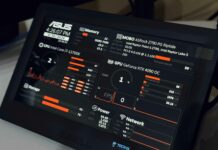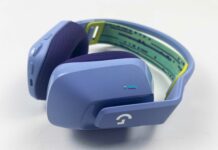Solid Value!
Review Summary
The Epomaker Shadow X is one of the best budget keyboards out there that nails all the fundamentals with its own unique take on the genre. While the knob switch might be gimmicky, the screen serves as a useful tool on top of being a great aesthetic piece. The switches, keycaps and stabilizers are all best in class, but it’s the build quality that impresses the most.
Hours Tested: 3 Days
Overall
-
Design - 8/10
8/10
-
Build Quality - 8.5/10
8.5/10
-
Typing Experience - 9/10
9/10
-
Features - 9/10
9/10
-
Performance - 8.5/10
8.5/10
-
Value - 8.5/10
8.5/10
Pros
- Impressive build quality and design
- Screen is actually useful
- Unique layout with knob switch
- Excellent stock switches
- Perfect stabs out of the box
- Great battery life with solid wireless performance
- High-quality keycaps with extra accent keys
Cons
- layout is not the most efficient
- A real volume knob would be more useful
- Accent key
Epomaker is no stranger when it comes to dabbling into the eccentricities of the keyboard hobby. They’ve come a long way from the early days of offering generic GK61 OEM rebrands. Over time, they’ve evolved into more of a distributor for niche brands like Aula and Akko, bringing their products to a broader Western audience.
This time, though, we’re looking at one of Epomaker’s own creations: the Shadow X. Initially released in a black colorway and now available in multiple different configs, it’s been a top seller for some time. It’s a unique keyboard with a lot to offer, but does it nail the fundamentals? Let’s dive in and find out.
Key Takeaways
- Epomaker Shadow X is a great budget keyboard that ticks all the boxes and then some while coming in at an affordable price.
- Buy it if you want a thocky, well-built keyboard that genuinely sounds great out of the box.
- Avoid it if you’re looking for a more traditional layout that uses its space better and prefers a volume knob.
Here are the key specs:
| Specification | Details |
| Model | EPOMAKER Shadow-X |
| Number of keys | 70 keys + 1 knob |
| Connectivity | Wireless and wired |
| Battery | 3000mAh |
| Structure | Gasket-mounted |
| LED Direction | South-facing LED |
| Keycap Profile | SA-like profile / Cherry profile |
| Keycaps | Double-shot PBT material |
| Plate material | PC |
| Hot-swappable | Yes |
| Bottom layer | Silicon pad |
| Sandwich layer | Poron foam, IXPE switch pad |
| Compatible system | Win/macOS/Linux/Android/iOS |
| Dimension | 370.4 x 129.8 x 47.8 mm |
| Weight | Around 0.8kg |
What Makes the Shadow X Different?
While there are a lot of nice prebuilts out now with deep, thocky sound signatures, none of them ace all the aspects of a good keyboard while carrying two gimmicks—one of which ends up serving as more of a useful tool.
Epomaker Shadow X is built well, sounds good, feels fantastic if you’re into tactiles, has solid software support and, above all, has perfect stabilizers out of the box. All that with a screen that can play silly GIFs while helping you control the RGB easily, and an entire knob to switch connections, what more could you ask for?
Unboxing Experience
The Epomaker Shadow X comes in a fairly ordinary but nonetheless clean cardboard box with ample branding all around. There are some product specs at the back, a large illustration of the keyboard upfront, and some pull tabs at the bottom for opening.
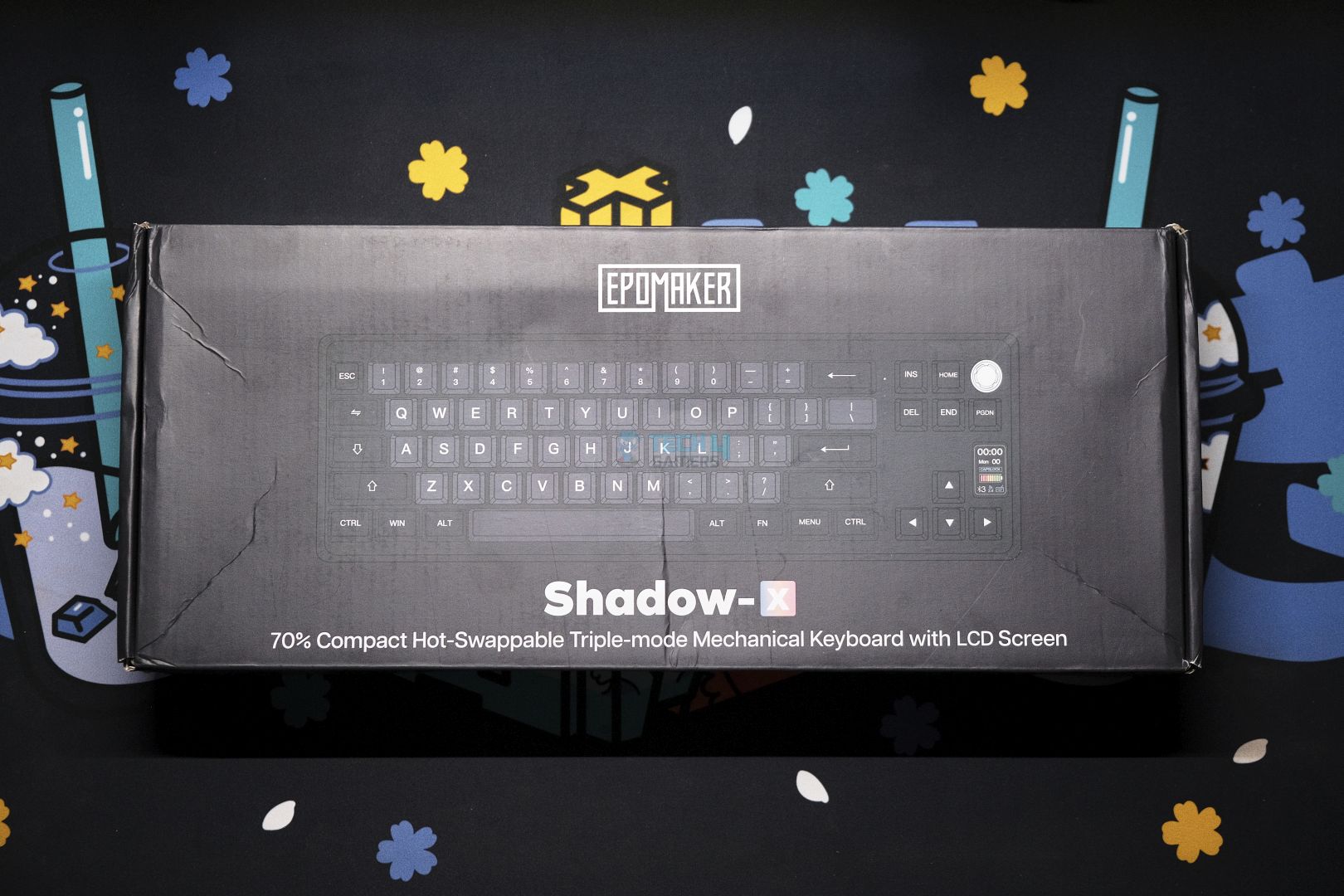
Once inside, we find the keyboard wrapped in plastic, with no dust cover included. There’s a manual underneath and accessories up top, which include some extra accent keycaps in yellow to break the monotony of black and grey.
Here’s everything included in the box:
- 1x Epomaker Shadow X
- 1x Manual
- 1x USB Type-C cable
- 1x Keycap/Switch Puller
- 3x Extra Switches
- 7x Extra Accent Keycaps
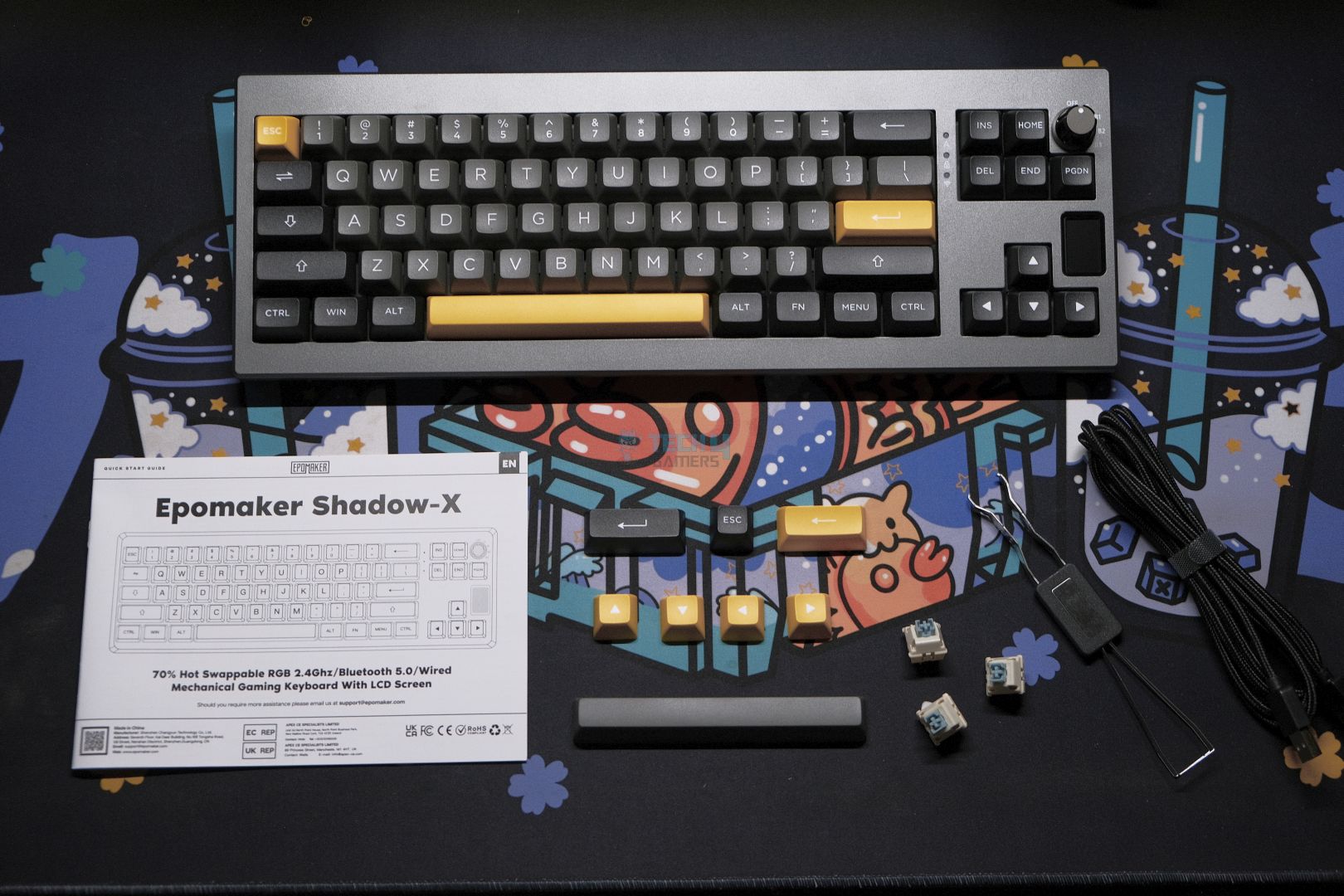
Design & Build
While you don’t usually expect the design or build quality to be subpar in this price range, you don’t expect it to be outstanding either. The Epomaker Shadow X breaks both those rules. At first glance, it easily fools anyone as an aluminum keyboard thanks to the annodized-esque finish of its top case.
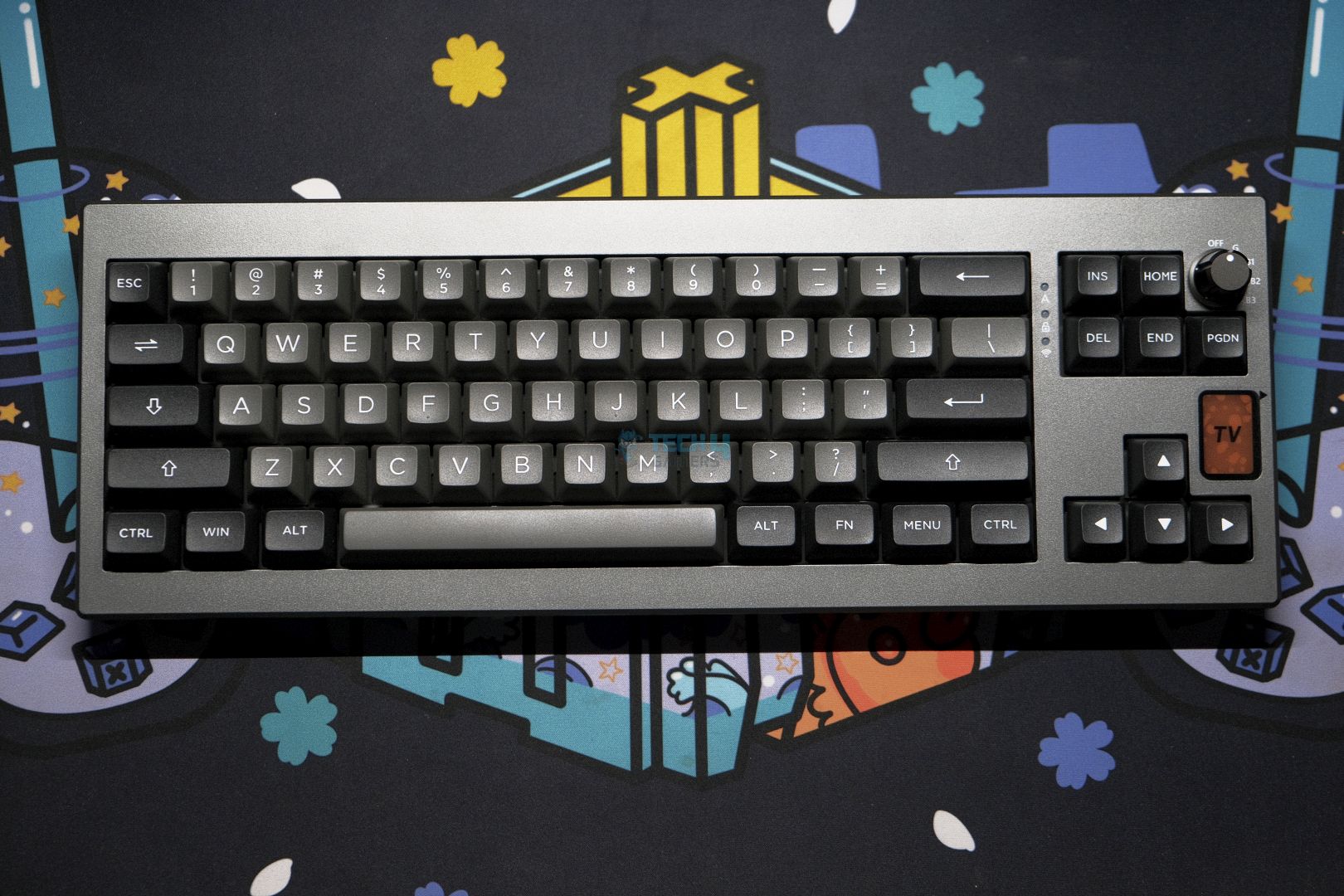
This gives the board a two-tone look since the bottom case is a less exciting black plastic that ends up accentuating the boring box-on-wedge side profile. It does blend in well with the sleek design of the board, more so than other boards like the Record Alice, so I can’t fault it too much.
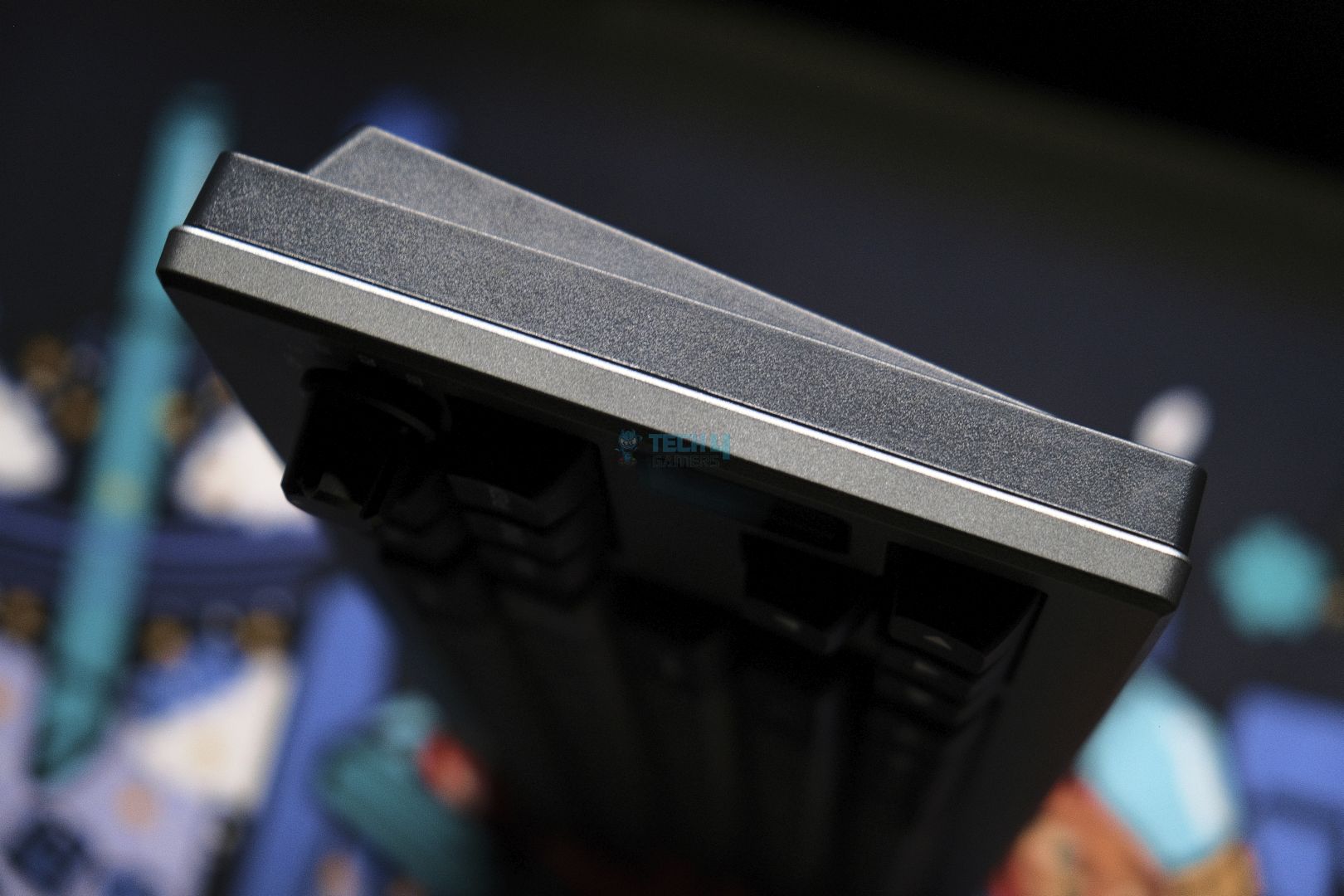
The board feels heavier than its contemporaries like the Aula F75 and F87 Pro but it does have a tad bit more case flex than them. There’s no creaking, though, despite the large top and bottom bezels. If you look beyond those, you’ll find the USB dongle neatly tucked inside a dedicated cutout under the USB port, which makes it harder to lose.
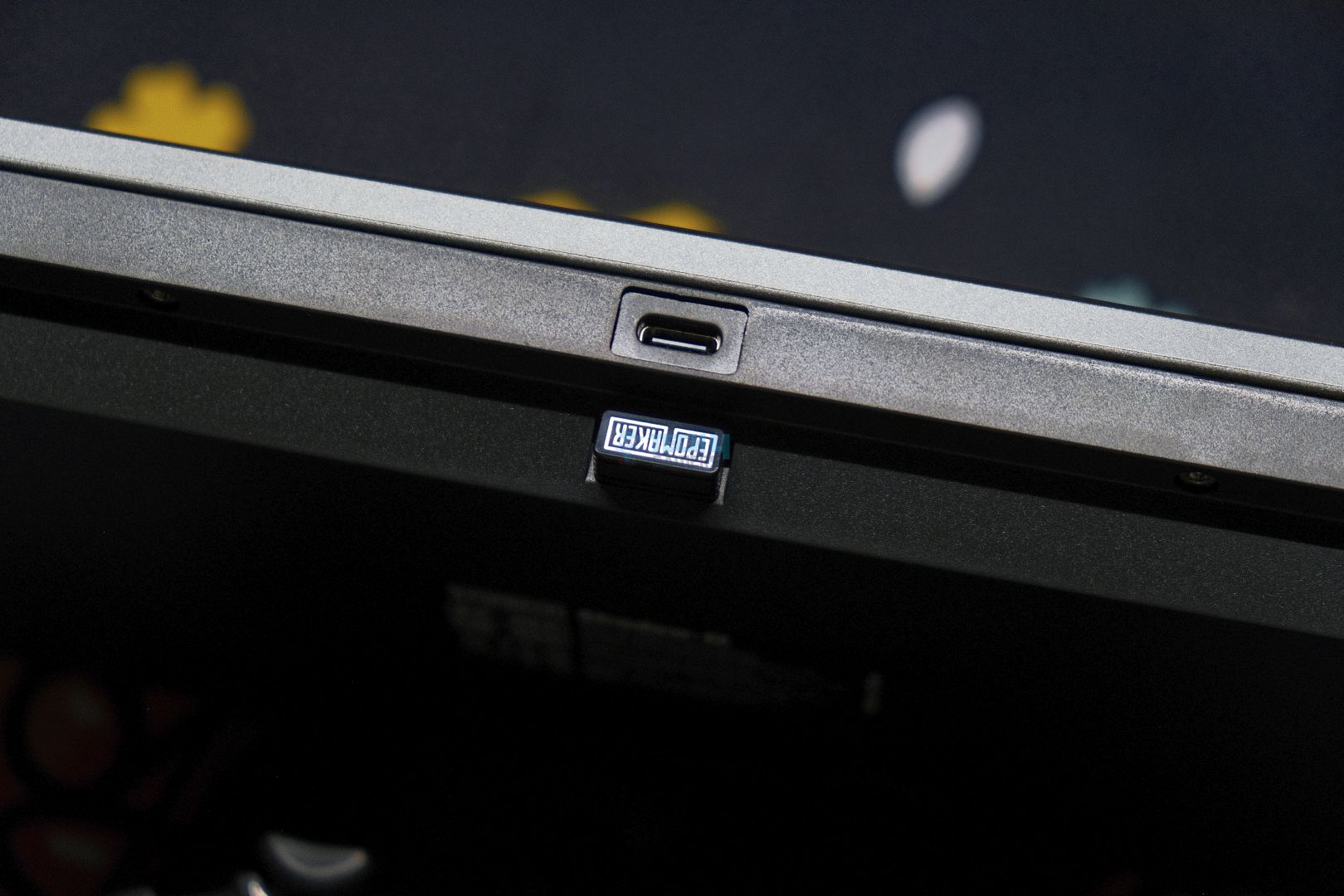
Up front, we see a neutral black and grey color scheme on an interesting layout that includes the arrow keys and nav cluster but ditches the function row. There’s also a knob in the top-right corner, but it’s not a rotatory encoder, rather just a fancy 5-step switch for changing between connection modes.
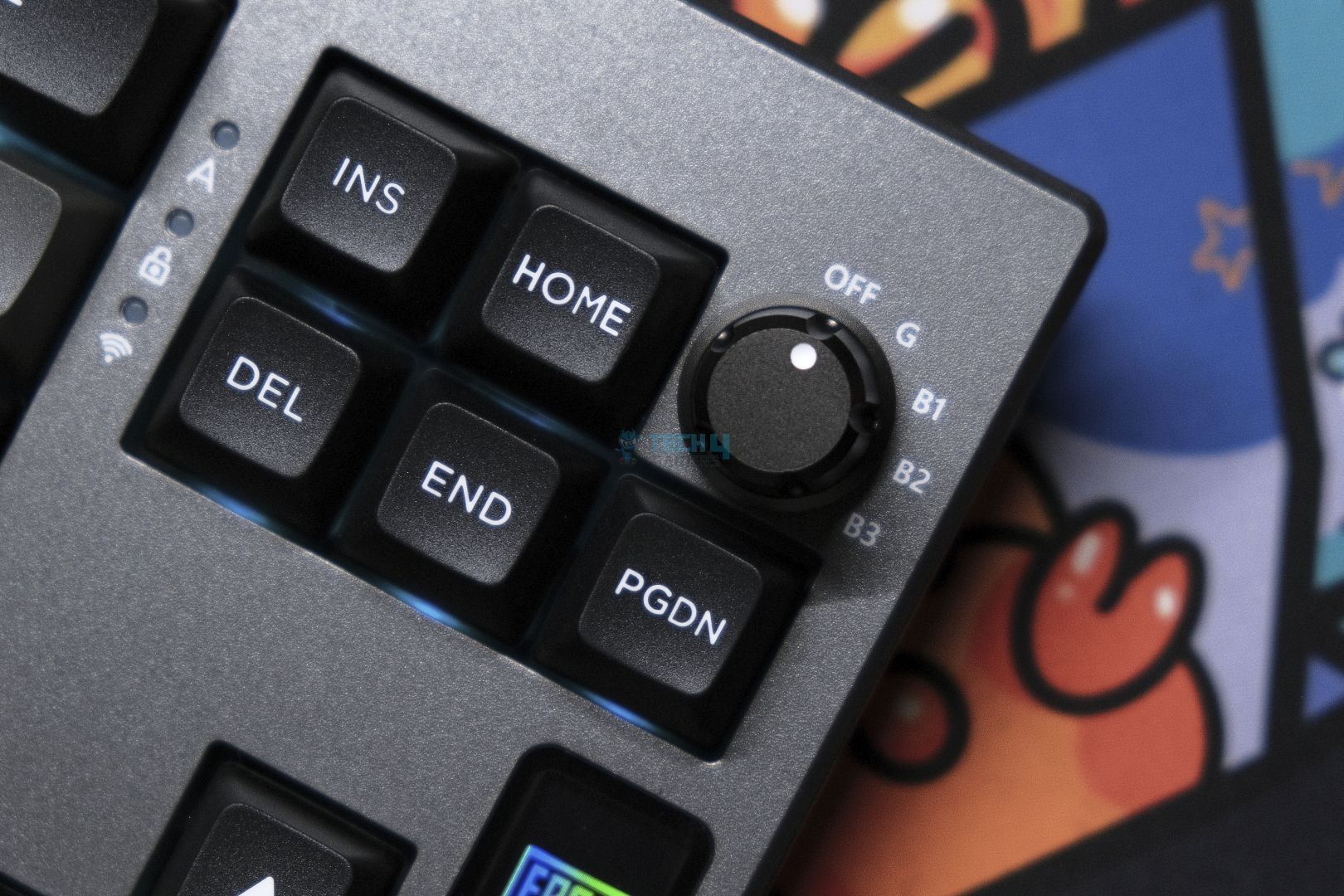
It does not click in, nor can it be reprogrammed to do anything else. Nevertheless, it’s made out of metal, and the clicks are deeply satisfying. Looking toward the left, there’s a bunch of LEDs for Caps Lock, Win key lock, and the 2.4 GHz wireless connection — all of whom are strangely dim for some reason.
Right below that, we see a screen, and it looks like the same one found in the GMK87, just turned vertical. It’s infinitely more useful here, as Epomaker has baked in all of the lighting controls onboard. Imagine you’re playing a fullscreen game and want to check the time. Just glance at the screen, and you’re good. More on this in the software section.
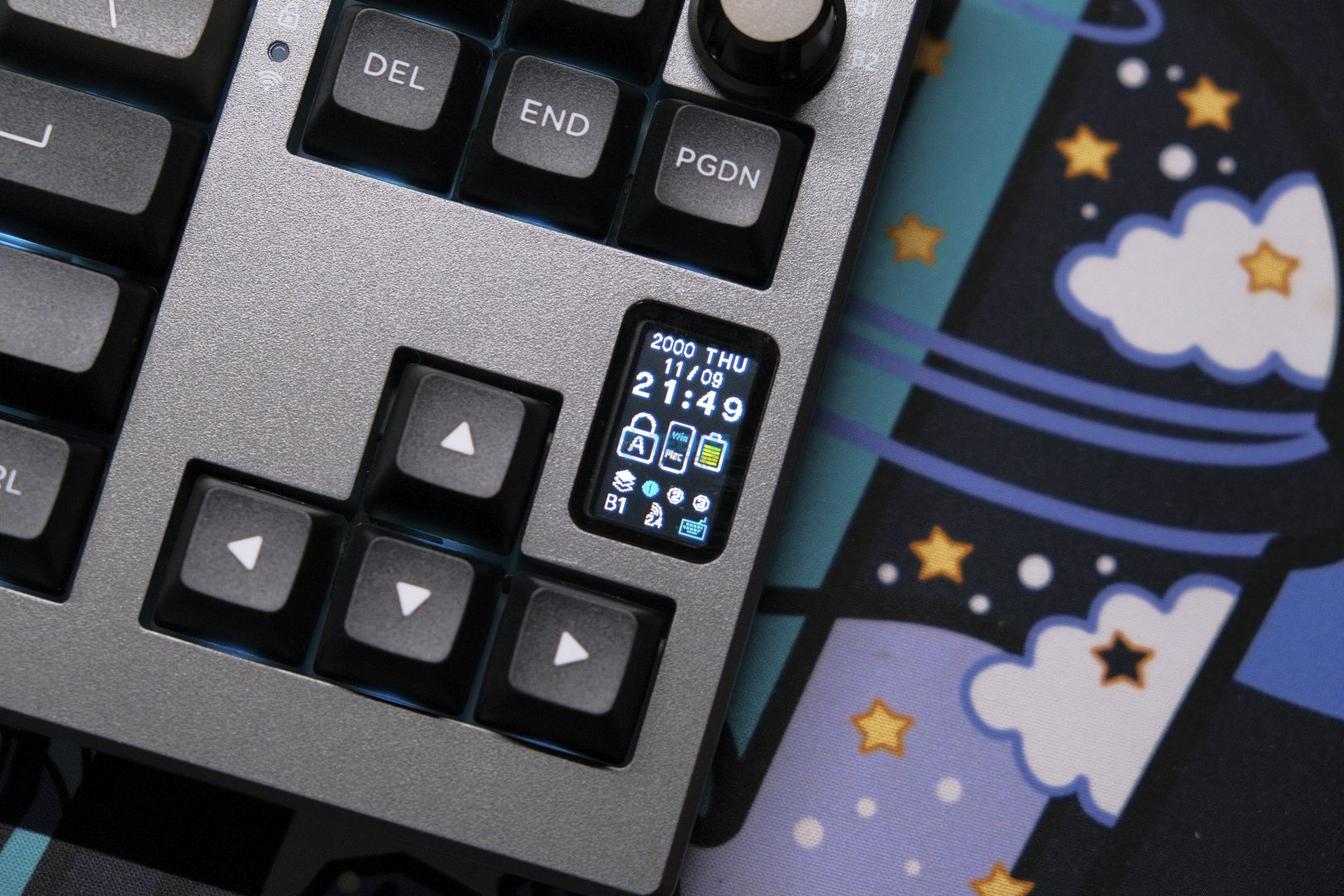
Overall, from the unique layout to the premium build quality and a clean aesthetic, the Epomaker Shadow X certainly leaves a strong first impression, perhaps even the strongest in this category.
Layout & Features
The Epomaker Shadow X is a wireless gasket-mounted mechanical keyboard with a 70% layout. Unlike a standard TKL, the Shadow X lacks the function row, making this an FRL TKL, a highly coveted layout in the hobby most recently donned by the Cycle7. In reality, though, this just ends up taking more space than it needs to.
The board is fully hot-swap with 5-pin south-facing sockets that have per-key RGB. It comes with standard plate-mount stabs with support for screw-ins on the PCB. Speaking of which, the plate is made of polycarbonate and is filled with a ton of flex cuts, but thankfully, the PCB is not; it’s a standard 1.6mm thick design.
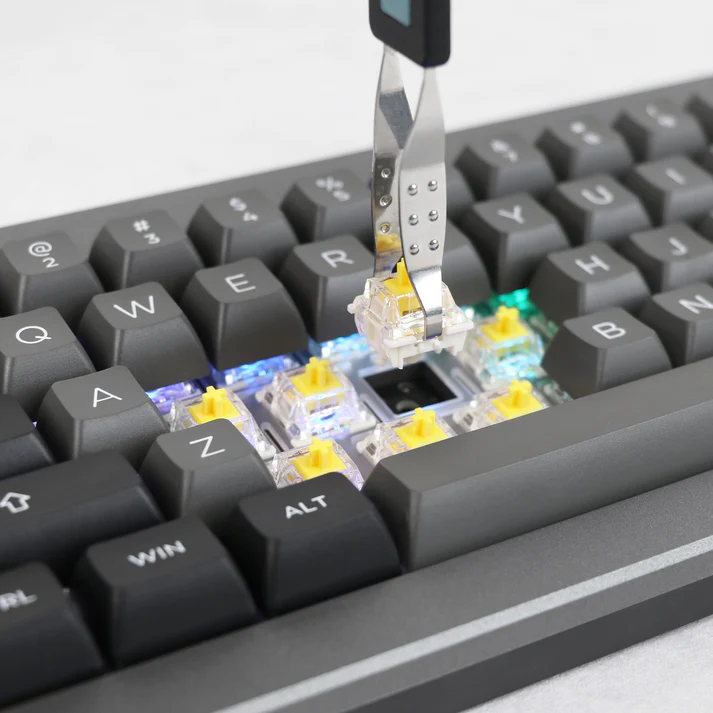
As mentioned above, the board also has a knob switch that’s an interesting addition but ultimately, a standard volume knob would’ve been far more useful. How many times are you changing connection modes? Not as often as you want to control your volume or play/pause media, that’s for sure.
The screen also makes me feel the same but I’m impartial to it since it doesn’t replace something better, it’s just there as an extra. And for that purpose, it’s a great accent piece that has bonus functionality. It took me some time to get used to the function key shortcuts to navigate the menus, but once you get the hang of it, it’s effortless.
What’s Inside?
Upon opening the keyboard, you see pretty barebone insides; the USB port is on a daughterboard and connects to the PCB with a ribbon cable, just like the battery. We also see that the gaskets are on the plate and not the PCB; they’re not made out of foam but somewhat stiff silicone.
The screen is directly connected to the PCB, so you don’t have to worry about any tethered cable ripping apart when taking off the top case. There are three layers of foam inside: plate foam, a PE foam sheet, and a silicone dampener at the bottom serving as case foam. I should mention that the board is very easy to take apart as well.
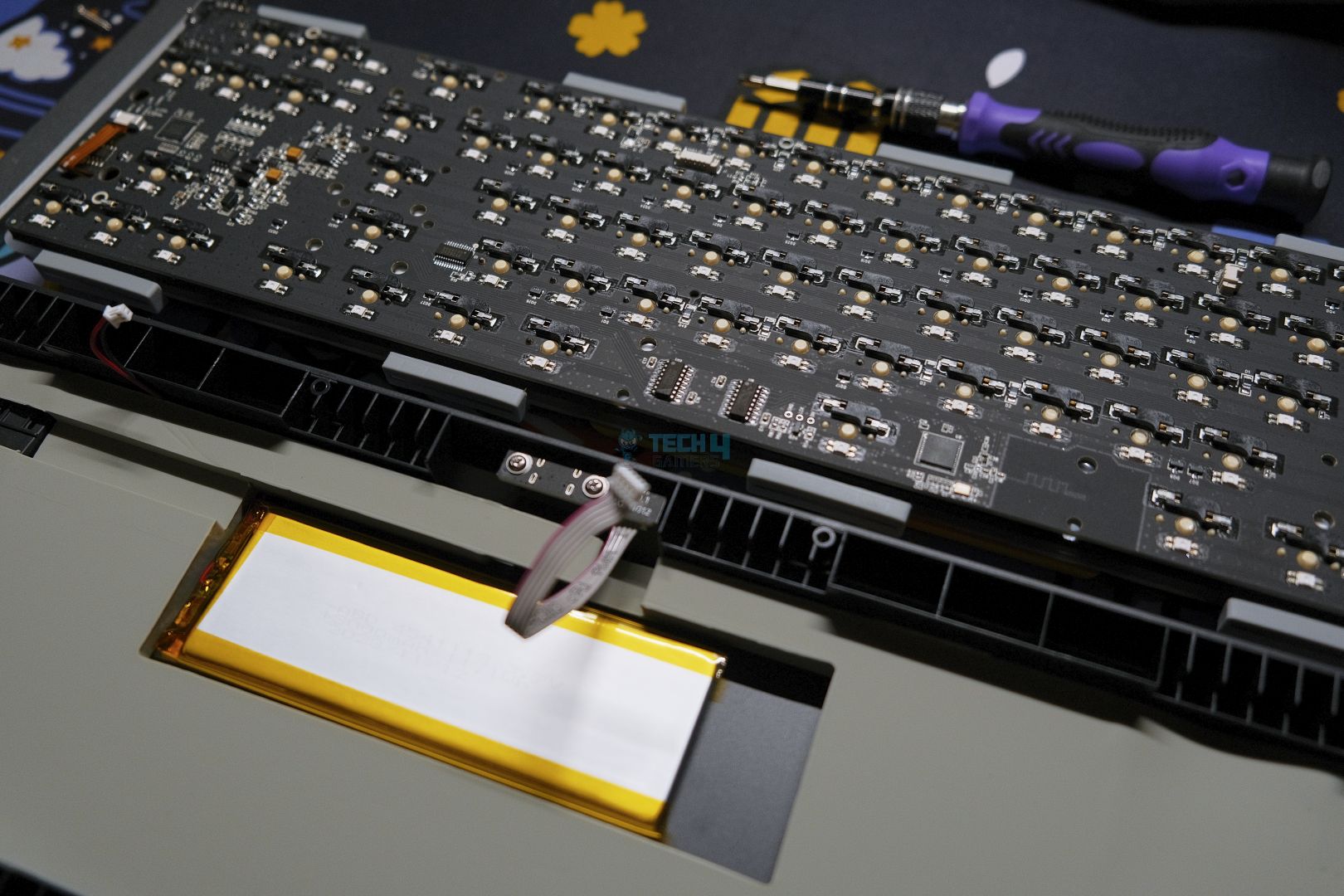
The Fundamentals
The Epomaker Shadow X is on the right track so far. A good, neutral, safe design with enough character and solid build quality to back that up. But a lot of manufacturers can do that, it’s what underneath that differentiates all these boards and it’s no surprise Aula’s dominance in this exact area is what has kept them at the top. So, does Epomaker deliver?
Keycaps
Epomaker has kitted out the board with doubleshot PBT keycaps in a profile they aptly call “SA-like. There’re also Cherry profile configs available on their site with different switches. The keycaps here are really nice; they’re thick, have sharp legends, no blemishes or warping and are comfortable to type on.
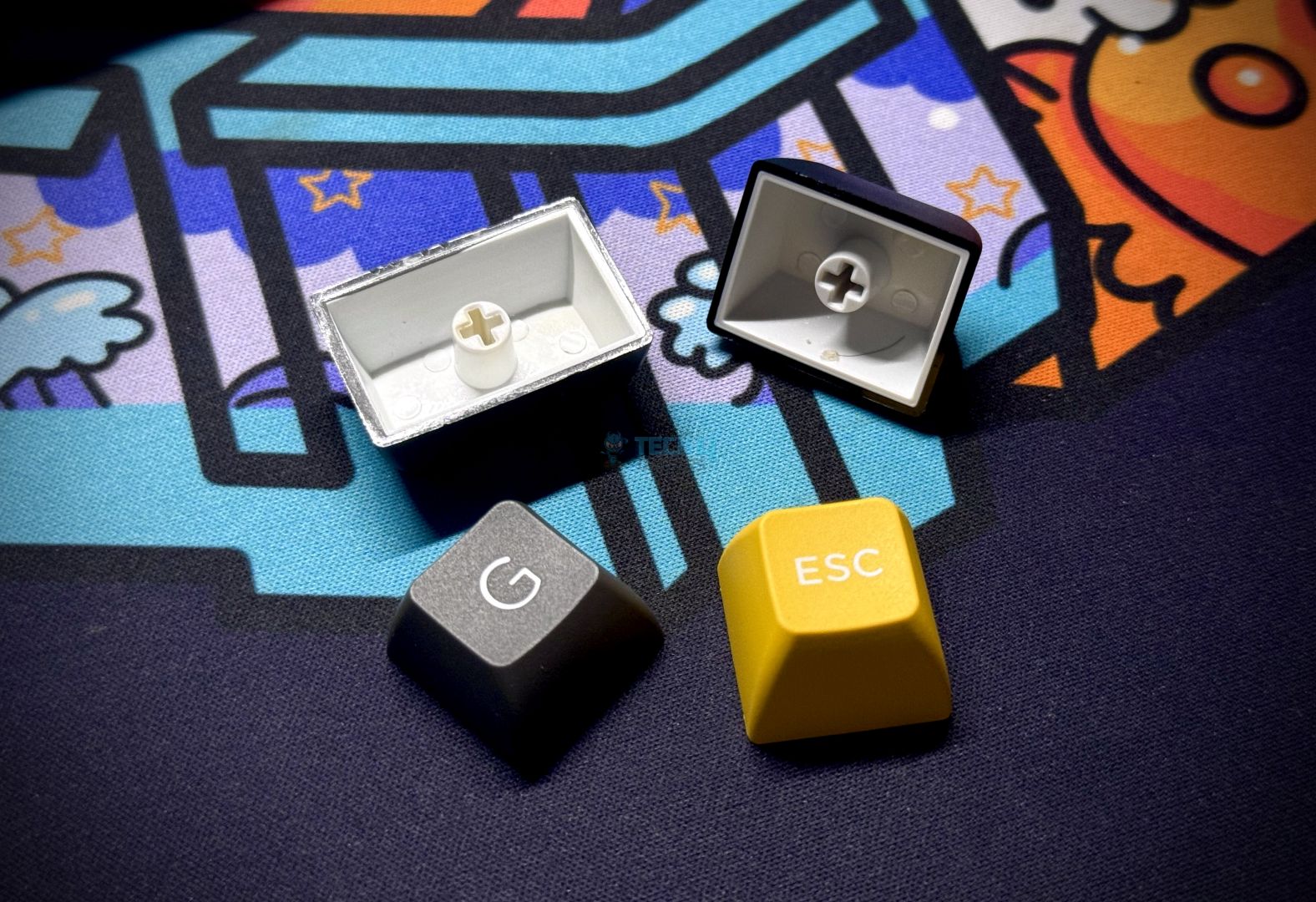
Compared to other doubleshot keycaps, they look and feel identical to Akko’s SA profile and given the two companies’ extensive history they might as well be coming from the same factory. I do wish the extra yellow accent keycaps they include had black text instead of white for improved eligibility.
Switches
There are a bunch of switches available to choose from, but this board, in its original black colourway, launched with the Epomaker Budgerigar switches, so that’s what we’ve got.
These are 55g tactile (that’s the initial actuation force) with a bottom out at 60g, so they’re on the heavier side, but that doesn’t make them sluggish. They feature a 47g double-stage spring that is snappy and nicely oiled from the factory. I was surprised to see that the entire stem is actually factory-lubed, given how tactile these feel.

Both the top and bottom housings are made from nylon, while the stem is a long pole and is made of POM. The tolerances are tight, leading to almost no stem wobble. These are fantastic tactile switches with absolutely no spring ping or any weird crunchiness; they also have consistent factory lubing across the board.
The sound is deep and thocky, it works well with the tall keycaps on top to create a low-pitched keyboard. I tried these in different boards and they sounded somewhat muted in most foamless configs, so Epomaker did right pairing it with a deep keyboard like the Shadow X.
Stabilizers
We see standard plate-mount stabilizers on the Epomaker Shadow X with support for screw-in stabs on the PCB. I found the stock stabs to be absolutely perfect out of the box. These might be the best plate-mount stabs I’ve heard in a prebuilt plastic board.
They match or sometimes even beat the Aula boards, which have been the gold standard for me previously. There’s no rattle or ticking in any stabilized key, and the factory lubing job is meticulous to the point you won’t ever need to touch them up. I even tried a GMK spacebar with an HMX Xinhai switch as a curveball, yet it still sounded great.
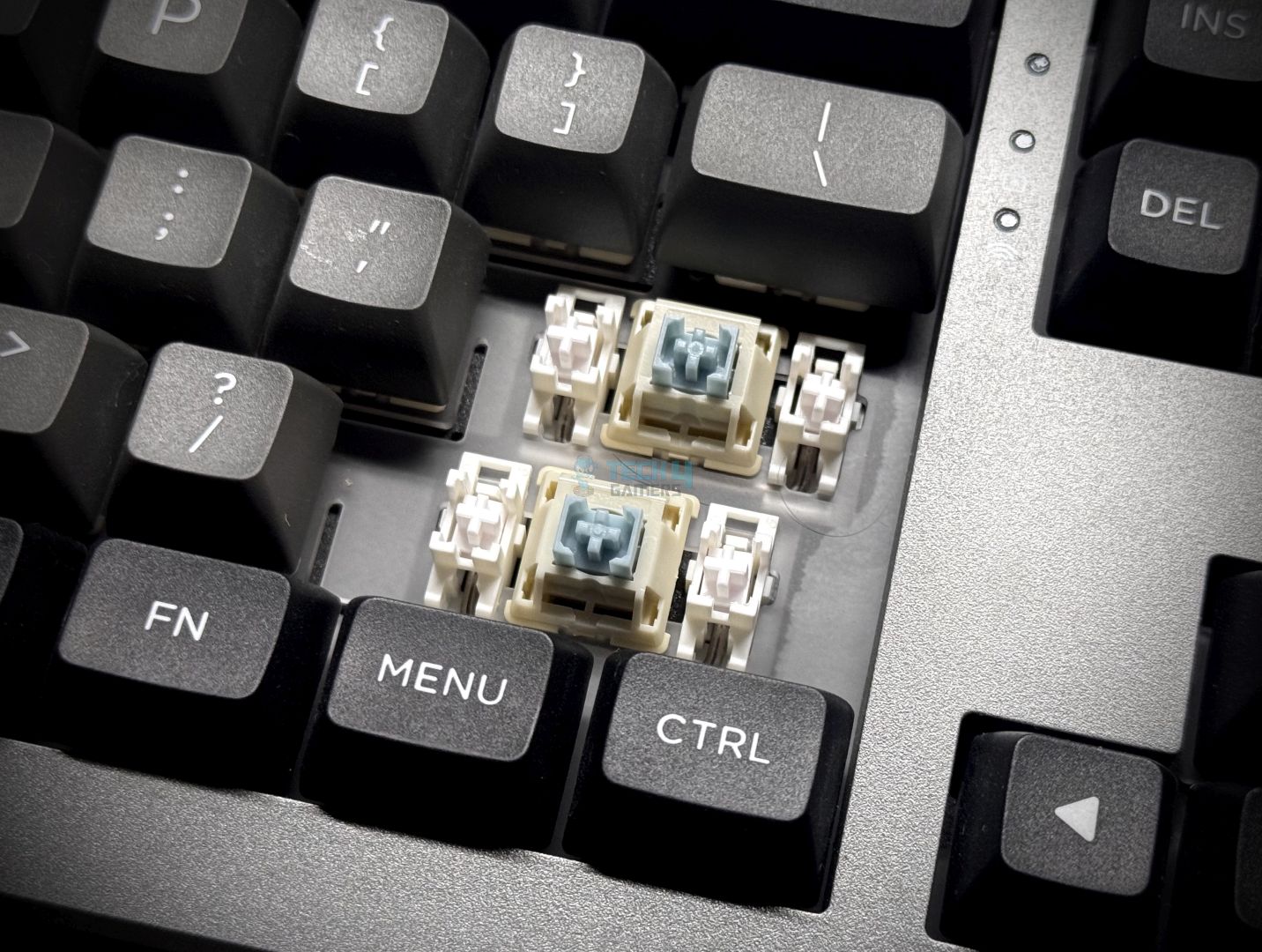
Connectivity & Performance
Epomaker Shadow X is a wireless keyboard with a single 3000mAh battery that Epomaker doesn’t claim any numbers on. It has support for both 2.4 GHz radio and Bluetooth. In my testing with the board at 100% running on the 2.4Ghz dongle with RGB on, it lasted a full day which would equate to 8-10 hours.
After recharging it, I’ve been using it without RGB for the past 3 days and the screen is showing 30% battery remaining. There were absolutely no lag or disconnection issues while playing wirelessly, but the latency is on the higher side for competitive gaming, so stick to the wired USB-C mode for that.
Typing Experience
Since the board is so easy to disassemble, we’ll be trying a modded config later on. Before that, here’s how the stock config sounds:
As you can hear, the board is very thocky, low-pitched and deep. It’s the perfect sound signature for newcomers to the hobby. I personally am no longer a fan of this kind of sound and these tactiles feel too heavy for me, but I can still appreciate this being so full-sounding. There’s absolutely no hollowness so the tall keycaps only help the sound.
Despite having a polycarbonate plate with flex cuts on all the alphas, the board is not bouncy at all. In fact, I’d hesitate to even call this soft. This is mainly due to the 1.6mm PCB and the silicone stuffed in the bottom that gives the board no room to flex. And I can’t end this section without shouting out those stabs; they’re once again perfect.
I ended up trying a modded build with HMX Hyacinth switches and GMK Metropolis switches, and it turned out awesome. The board adopts a more creamy and marbly sound, similar to Aula boards, when paired with linear and Cherry profile keycaps, but it’s not suitable for clacky builds.
– Huzaifa Haroon
The Software
Epomaker bundles its own proprietary software with the Shadow X, as there’s no VIA/QMK compatibility onboard. The software is easily downloadable from their site and has all the basic features you’d expect. There is macro recording, function layer adjustments, key remapping, lighting controls and even a “Share” tab for user-uploaded GIFs.
I’d say it’s a tier above the software for Lucky65, but you’re still quickly humbled when you have to wait 2-3 minutes for your GIF to upload on the screen. There is an account tab as well, but you’re not required to sign in until and unless you want to share your own GIFs with the world and have them show up for other users to download.
Screen Overview
I really appreciate what Epomaker has done with the screen here. You can easily upload any GIF you want in the software, it even shows you all the frames broken down with further settings like frame delay. You can preview any animation within the software before uploading it which is a great add-on.
Before all that, by default, you see a homepage with a lot of useful info at quick glance like the battery level, what connection you’re using, what function layer you’re on, whether you have Mac or Windows keys enabled and even a Caps Lock indicator.
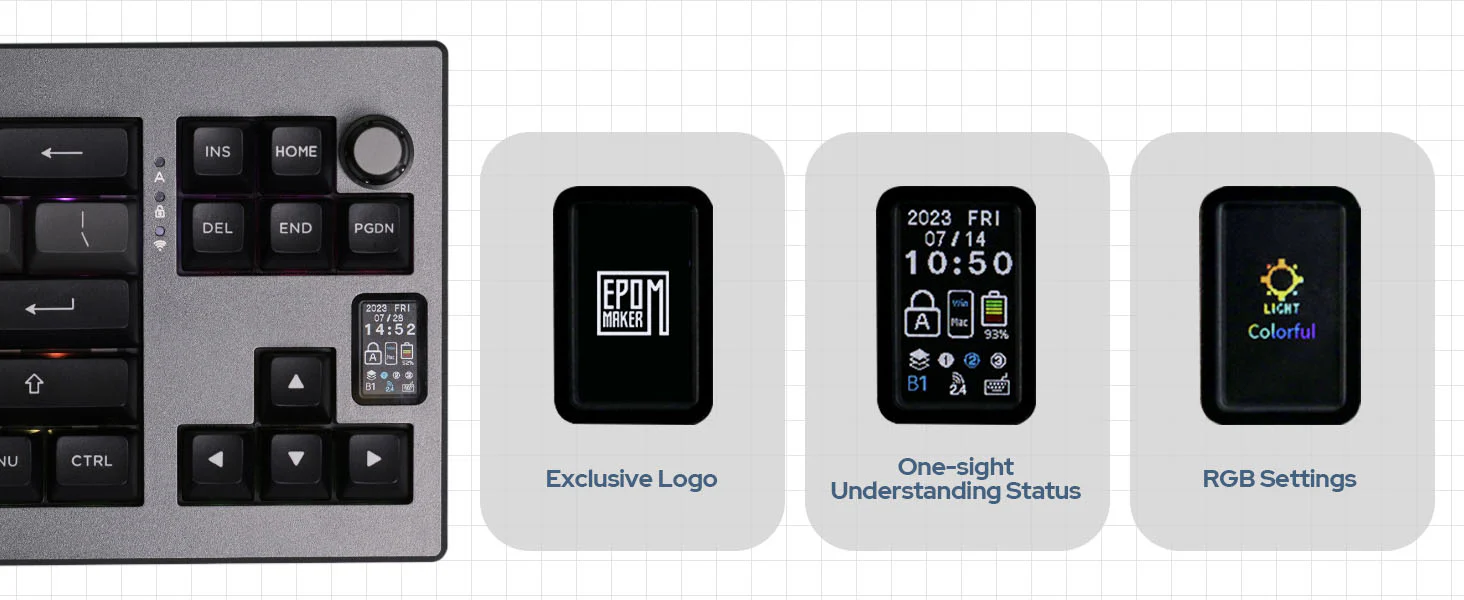
The day, date and time needs to be synced from the Epomaker software, just like any pictures or GIFs you need to show on the screen. There’s a total of 6 you can set and cycle through at a time using Fn+Menu+PgDn, and it’s saved to the board. The animations play at a smooth frame rate and the resolution is actually, surprisingly decent.
All the text is sharp, eligible and there’s no fringing or weird colors off-axis. It’s bright enough to use even under a monitor light bar. No need to pick up your phone to check the time anymore.
As for the RGB controls, you can press Fn+Menu+Enter to bring them up. There’re options for brightness, color, speed, and what mode you’re on. You cycle through these by pressing left or right arrow while holding Fn+Menu, and press Enter to select, then use the arrows again to, for instance, choose cyan color for the Raindrop effect.
If this all feels like a lot to you, you can still control the RGB directly with standard Fn key combinations or in the software, which also has per-key RGB control and fan-made RGB profiles/animations. These GIFs are abundant in quantity, and you’re bound to find one you like quickly, they also upload very quickly on the screen.
Should You Buy It?
Buy It If
✅You want a screen on your keyboard that’s more than just a gimmick or a simple aesthetic addition.
✅Design and build quality are important to you, and you’ll appreciate owning a keyboard with a bit of character.
✅You like thocky-sounding keyboards with no compromises and perfect stabilizers out of the box.
Don’t Buy It If
❌You want a compact layout that makes efficient use of its space, and you cannot make do without function keys.
❌A knob is a must for you and the somewhat gimmicky knob switch is not going to cut it.
❌QMK/VIA compatibility is a deal-breaker and you don’t want to bother with unintuitive Chinese keyboard software.
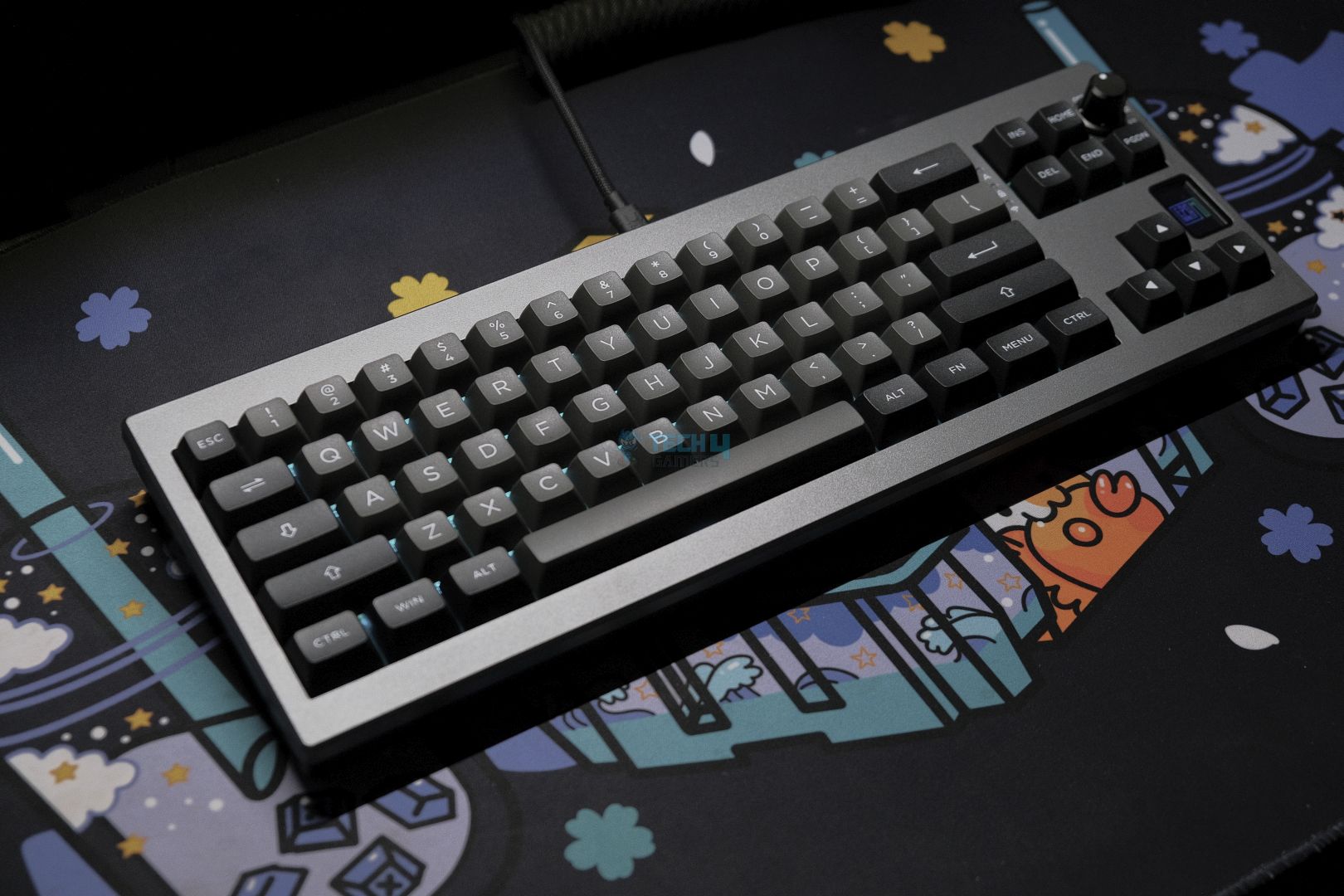
My Thoughts
The Epomaker Shadow X is an amazing budget keyboard that doesn’t cut corners to achieve its goal of being a great value. I got this board on sale and even without the discount, I’d happily recommend this to anyone who wants a slightly more unique keyboard compared to the Aulas of the world.
Don’t get me wrong, they’re great too, but this board does just a bit more with its screen, and the sleek design helps a lot. Some people might not be a fan of those chunky bezels, but I don’t mind them at all. There’s not a single glaring flaw here except maybe the average software experience, but even then, nothing else really comes close.
What Others Are Using?
Thank you! Please share your positive feedback. 🔋
How could we improve this post? Please Help us. 😔
Born and raised around computers, Huzaifa is an avid gamer and a keyboard enthusiast. When he’s not solving the mysteries of technology, you can find him obsessing over semiconductors, striving to inform the curious.
He’s been modding tech since forever and knows a thing or two about what makes a great typing experience, making him the perfect expert to rely on for your keyboard recommendations! With his IT certification from Google, you can trust him to advise you with deliberation and integrity.
- Favorite Prebuilt: Epomaker P75
- Favorite Budget Option: Tecware Spectre 75
- Favorite Custom Keyboard: TKD Cycle7 / Lucky65 V2


 Threads
Threads

![Corsair Dark Core RGB Pro Review [Hands-On] Corsair Dark Core RGB Pro - 9 Separate RGB Zones](https://tech4gamers.com/wp-content/uploads/2023/04/Corsair-Dark-Core-RGB-Pro-9-Separate-RGB-Zones.jpg)
![Best Gaming Mouse For Big Hands [Budget, Wired & Wireless] Best Gaming Mouse For Big Hands](https://tech4gamers.com/wp-content/uploads/2023/06/Best-Gaming-Mouse-For-Big-Hands--218x150.jpg)
